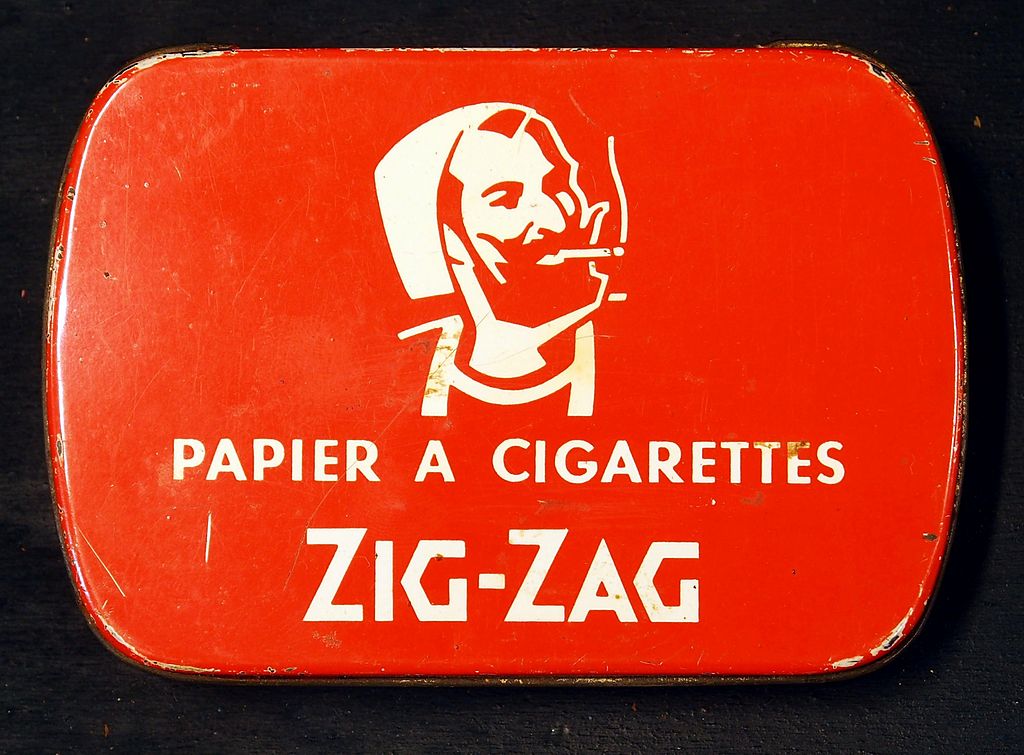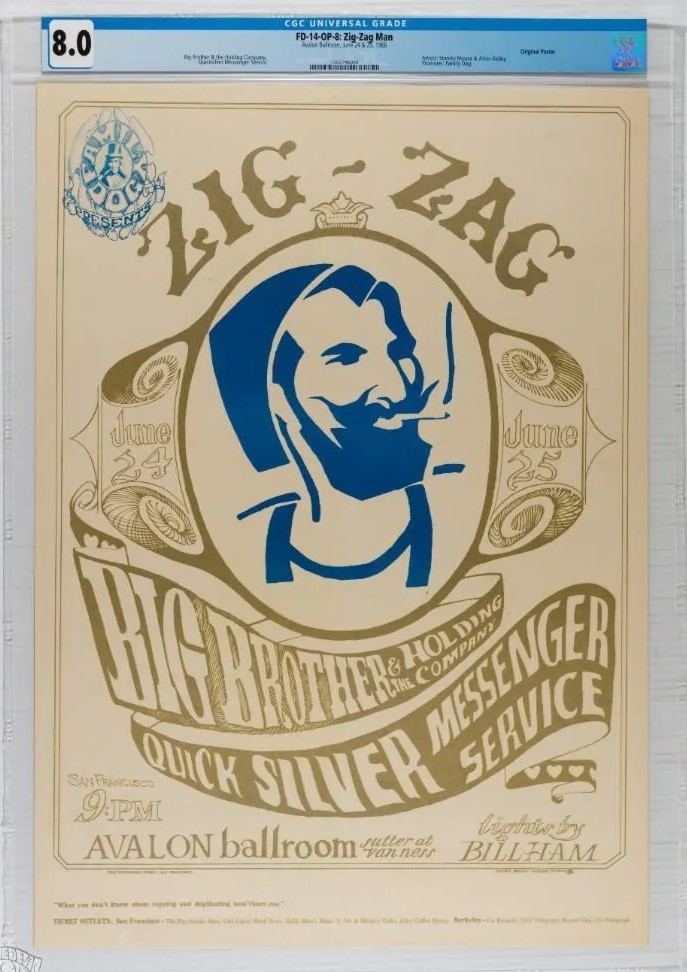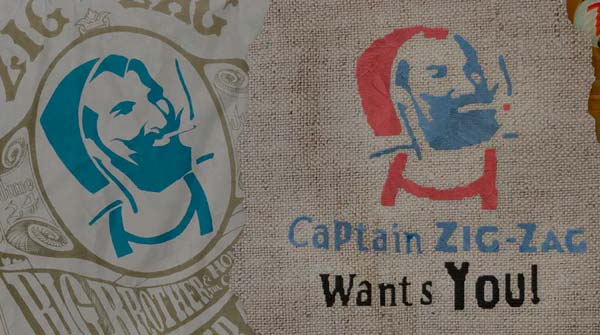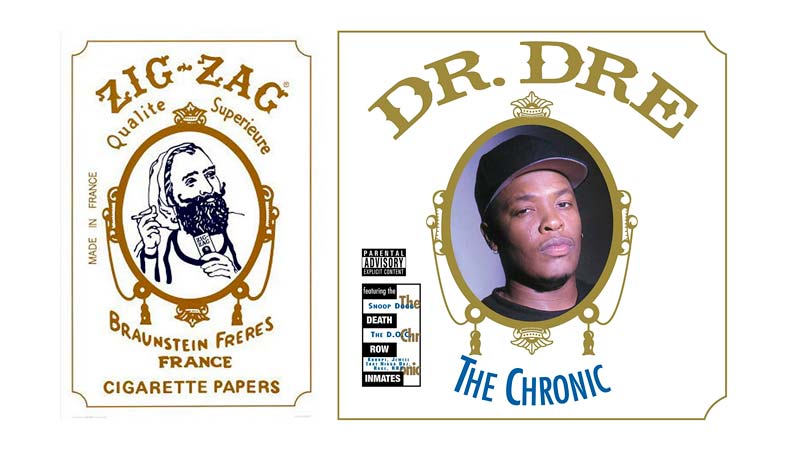While the tobacco industry has the Marlboro cowboy, stoners have the famous Captain Zig-Zag. Over the years, Zig-Zag rolling papers have become synonymous with a smooth, slow-burning experience. You know exactly what time it is when your friend pulls out the iconic bright orange package with the mustachioed man on the front. But have you ever wondered who that man is and where he came from?
How Captain Zig-Zag Became a Stoner Icon


While the tobacco industry has the Marlboro cowboy, Cannabis enthusiasts have Zig-Zag man, aka the famous Captain Zig-Zag.
Over the years, Zig-Zag rolling papers have become synonymous with a smooth, slow-burning experience. You know exactly what time it is when your friend pulls out the iconic bright orange package with the mustachioed man on the front. But have you ever wondered who that man is and where he came from?
Captain Zig-Zag – A Brief History
To understand the Captain Zig-Zag legacy, let’s go back to the origins of the brand. Founded in 1855 by Frenchmen Maurice and Jacques Braunstein, the Zig-Zag brand introduced a new and convenient way to roll tobacco products with specially designed papers.
The duo quickly met with success and, within a few years, managed to perfect a packaging process that allowed the papers to automatically roll out of a booklet, one by one, in a “z” shape: hence the name Zig-Zag. The brand later patented the process and won a gold medal at the 1900 Paris World’s Fair for this invention.
Who Is Captain Zig-Zag?
The slim design and ingenious packaging weren’t the only things that caught people’s eyes – many wondered who the dashing man on the cover of each rolling paper brochure was.
The truth is that the Zig-Zag man himself is part of folklore. Legend has it that Captain Zig-Zag, a Zouave soldier, was in the midst of battle when his clay pipe was shot and shattered in his hands. In serious need of a smoke, he decided to try rolling tobacco using a piece of paper torn from a musket cartridge. Little did he know that at the siege of Sevastopol, his most valuable achievement would be rolling the cigarette that inspired a whole generation of smokers.
Thanks to the slow burn and ease of sticking, Captain Zig-Zag has made cannabis history with a well-known brand to stoners. While the brand has experimented with other looks and figureheads, the famous bearded man has become integral to its image and success.
The typical Zig-Zag paper is made from natural gum arabic, along with hemp and flax, which are guaranteed to be free of any chemical agents.
The Evolution of Captain Zig-Zag
With over 140 years of existence under its belt, Captain Zig-Zag has undergone many iterations and transformations until it arrived at the iconic neon look we know and love. So let’s take a closer look at how he became today’s charming, almost-hip captain.
1879
Although the company was founded several years ago, the Zouave soldier we know as the “Zig-Zag man” did not appear on the packaging until 1879. The intricate image paid tribute to the ever-resourceful soldier who inspired a DIY movement.
1894
The year that changed everything: In 1894, the Braunstein brothers perfected and patented their “z” shaped packaging method. They named the new product “Zig-Zag” after the unique shape of the intertwined papers as they were removed from the package. Still in use today, each booklet is made using the same revolutionary process.
1900
In 1900, Zig-Zag papers achieved international recognition when they were awarded a gold medal at the Paris World’s Fair. Six years later, Zig-Zag was registered as a trademark and became successful in almost every corner of the world.
1966
In classic “do it first, ask forgiveness later” form, the Zig-Zag logo is used in a poster design for a San Francisco show at the Avalon Ballroom for Big Brother & The Holding Company (Janis Joplin), and Quicksilver Messenger Service in the summer of 1966.


Although the poster’s creators didn’t bother to get official copyright permission, they did take the time to include a quote at the bottom of the poster, “What you don’t know about copying and duplication won’t hurt you.” Lesson learned.
1969
In 1969, the Captain Zig-Zag campaign was created, and our captain was born. Portrayed similarly to Uncle Sam’s propaganda poster, the Zig-Zag man poses with the quote “Captain Zig-Zag Wants YOU!” underneath. While the campaign didn’t last long, the name Captain Zig-Zag stuck for good.


1986
In 1986, the Bolloré group bought Zig-Zag, which it sold to Républic Technologies in 2000.
1992
To solidify their place in pop culture, Dr. Dre released his first solo album, “Chronic” with a tribute to Zig-Zag rolling papers on the album cover. The image shows a representation of himself in the golden Zig-Zag frame, ready to smoke Chronic.


2020
Today, Zig-Zag proudly sells a wide range of rolling papers and smoking accessories, with the same ingenious soldier drawn on every package. He now appears to be wearing a soft cap and an impressive mustache, clearly trying to fit in with his new circle of stoner friends – but no matter what he wears or how he styles his facial hair, we still know that his face represents nearly 150 years of quality rolling.
—
(Featured image by Alf van Beem (CC0 1.0) via Wikimedia Commons)
DISCLAIMER: This article was written by a third-party contributor and does not reflect the opinion of Hemp.im, its management, staff, or its associates. Please review our disclaimer for more information.
This article may include forward-looking statements. These forward-looking statements generally are identified by the words “believe,” “project,” “estimate,” “become,” “plan,” “will,” and similar expressions. These forward-looking statements involve known and unknown risks as well as uncertainties, including those discussed in the following cautionary statements and elsewhere in this article and on this site. Although the company may believe that its expectations are based on reasonable assumptions, the actual results that the company may achieve may differ materially from any forward-looking statements, which reflect the opinions of the management of the company only as of the date hereof. Additionally, please make sure to read these important disclosures.
First published in Fakty Konopne, a third-party contributor translated and adapted the article from the original. In case of discrepancy, the original will prevail.
Although we made reasonable efforts to provide accurate translations, some parts may be incorrect. Hemp.im assumes no responsibility for errors, omissions or ambiguities in the translations provided on this website. Any person or entity relying on translated content does so at their own risk. Hemp.im is not responsible for losses caused by such reliance on the accuracy or reliability of translated information. If you wish to report an error or inaccuracy in the translation, we encourage you to contact us.



Comments are closed for this post.